Storing sprouts properly is essential to maintain their freshness, nutritional value, and safety for consumption. Whether you’ve grown your sprouts at home or purchased them from the store, understanding the best practices for storage can help extend their shelf life and prevent spoilage.
This guide on how to store sprouts will cover simple and effective methods to keep your sprouts crisp and fresh.
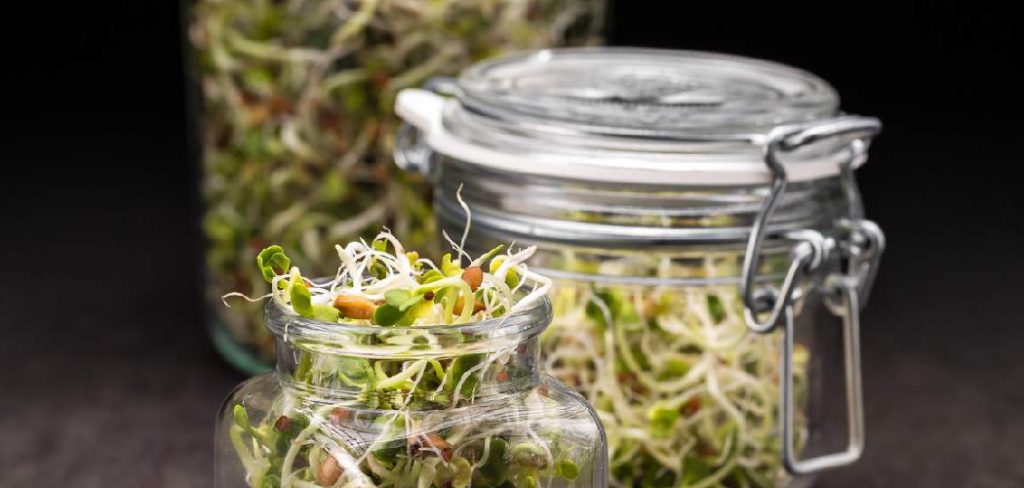
What is Sprouting?
Before diving into storage methods, it’s important to understand what sprouting is and why it’s beneficial. Sprouting refers to the process of germinating seeds or legumes in water. This process activates enzymes and breaks down complex carbohydrates, making the nutrients more easily digestible. As a result, sprouts are rich in vitamins, minerals, protein, and antioxidants.
Sprouts can be made from a variety of seeds such as alfalfa, broccoli, mung beans, lentils, and more. They add a crunchy texture and nutty flavor to salads, sandwiches, stir-fries, and other dishes.
Benefits of sprouted food include
- Increased Nutrient Availability
- Improved Digestion
- Enhanced Flavor and Texture
- Lowered Risk of Food-borne Illnesses.
8 Step-by-step Guidelines on How to Store Sprouts
Step 1: Rinse the Sprouts
Before storing your sprouts, it is crucial to rinse them thoroughly. Place the sprouts in a clean colander or mesh strainer and rinse them under cool, running water. This helps remove any dirt, debris, or bacteria that may be present, ensuring they stay fresh and safe to eat.
Be gentle during the rinsing process to avoid damaging the delicate sprouts. After rinsing, shake off excess water to prevent moisture buildup, which can lead to spoilage.
Step 2: Dry the Sprouts
After rinsing, it is essential to dry the sprouts thoroughly to prevent excess moisture, which can accelerate spoilage. Use a clean kitchen towel or paper towels to gently pat them dry. Alternatively, you can spread the sprouts in a single layer on a dry towel and allow them to air dry for a few minutes.
Ensure that the sprouts are completely dry before moving on to storage, as lingering water can promote bacterial growth and reduce their shelf life.
Step 3: Wrap Them in Paper Towels
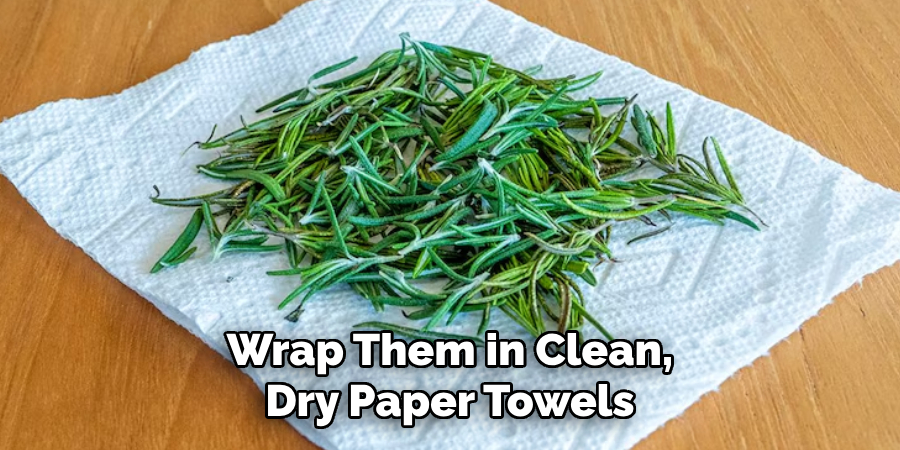
Once the sprouts are dry, wrap them in clean, dry paper towels. The paper towels will help absorb any remaining moisture and keep the sprouts dry during storage. Avoid wrapping them too tightly, as sprouts need some airflow to stay fresh.
Place the wrapped sprouts in a resealable plastic bag or an airtight container. Be sure to leave the bag slightly open or use a container with small ventilation holes to allow for minimal airflow, which helps prevent condensation and extends the shelf life of the sprouts.
Step 4: Store in the Refrigerator
To keep your sprouts fresh and crisp, store them in the refrigerator. The ideal temperature for storing sprouts is between 35-40 °F (2-4°C). This temperature range helps slow down sprout’s metabolic activity and inhibits bacterial growth, keeping them fresh for longer.
Place the wrapped sprouts in the vegetable crisper drawer or on a shelf towards the back of your fridge, where temperatures are most consistent.
Avoid storing sprouts near raw meats or eggs to prevent cross-contamination. Also, do not store them in the freezer as it can damage their delicate texture and flavor.
Step 5: Monitor the Sprouts
Regularly check your stored sprouts for signs of spoilage, such as a foul odor, slimy texture, or discoloration. These changes indicate that the sprouts are no longer safe to eat and should be discarded immediately. Monitoring your sprouts every couple of days allows you to enjoy them at their peak freshness.
If you notice any excess moisture building up inside the storage container or bag, replace the paper towels with dry ones to maintain the ideal environment and prevent bacterial growth. Staying vigilant about their condition will help ensure that your sprouts remain crisp, fresh, and safe for consumption.
Step 6: Rinse and Refresh
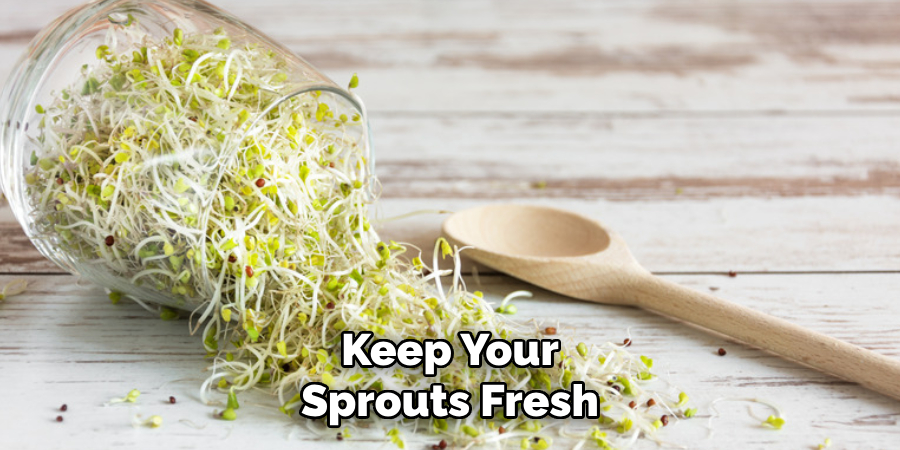
To keep your sprouts fresh and free from bacteria, it’s a good idea to rinse and refresh them every couple of days. Remove the sprouts from their storage container or bag, and gently rinse them under cool, running water using a colander or mesh strainer. This helps wash away any accumulated bacteria or debris that may have formed during storage.
After rinsing, ensure the sprouts are thoroughly dried using a clean kitchen towel or paper towel, just as you did before initial storage. Replace the paper towels in the storage container or bag with fresh, dry ones to maintain the ideal environment for the sprouts. Once refreshed, return the sprouts to the refrigerator promptly. Regular refreshing helps extend their shelf life and keeps them safe and enjoyable to consume.
Step 7: Store in the Right Container
Choosing the right storage container is vital to ensure your sprouts stay fresh and safe. Avoid storing them in plastic bags or containers that may contain harmful chemicals or promote bacterial growth.
Instead, opt for glass jars, airtight food storage containers, or produce bags specifically designed for sprout storage. These options provide ample airflow while keeping out bacteria and maintaining the ideal moisture level.
Step 8: Consume within 3-5 days
The shelf life of sprouts varies depending on various factors such as type, freshness at purchase, and storage methods used. However, it’s generally recommended to consume them within 3-5 days of initial storage. After this time frame, the sprouts may start to lose their crispness and may not be as safe to consume due to potential bacterial growth.
To ensure your sprouts are fresh and safe for consumption, follow these guidelines on how to store sprouts and always monitor their condition regularly. With proper storage, you can enjoy fresh, crunchy sprouts in your meals for days!
Do You Need to Use Professionals and How Much Does It Cost?
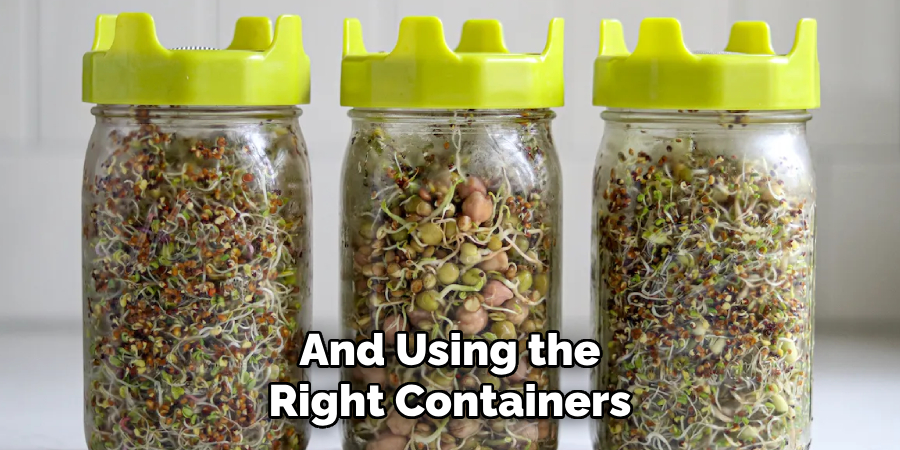
Storing sprouts at home is a relatively simple process that doesn’t require professional assistance. With the proper tools and techniques, such as rinsing, drying, and using the right containers, most people can easily store sprouts themselves. However, if you prefer to purchase pre-packaged sprouts or want to ensure the highest standards of food safety, opting for professionally grown and packaged sprouts may be a good alternative.
Professionally grown sprouts are often produced in controlled environments to minimize the risk of contamination, typically following strict health and safety guidelines. The cost of purchasing professionally packaged sprouts varies depending on factors such as type, brand, and quality. On average, a small package of fresh sprouts can range from $2 to $5 in most grocery stores or farmer’s markets. While this may seem higher than the cost of sprouting and storing them yourself, the convenience and added assurance of food safety can make it a worthwhile investment for some consumers.
Additional Tips
- Always buy fresh and organic sprouts to ensure the best quality and taste.
- Do not mix different types of sprouts when storing as they may have varying shelf lives and can contaminate each other.
- If you plan on consuming only a portion of the sprouts, store the rest in an airtight container with a few paper towels to absorb excess moisture.
- Avoid rinsing or refreshing sprouts right before storage, as excess moisture can promote bacterial growth during storage.
- Different types of sprouts may require slightly different storage methods, so always check the packaging or do some research before storing.
- If possible, purchase sprouts with roots still attached as they tend to last longer and have a higher nutritional value.
With these tips and proper storage techniques, you can enjoy crunchy, delicious sprouts in your meals for longer while keeping them fresh and safe to eat. Happy sprout storing!
Frequently Asked Questions
Q: Can I Freeze Sprouts for Long-term Storage?
A: Freezing sprouts is not recommended as it can damage their delicate structure and cause them to lose their crispness and flavor. However, some types of sprouts, such as pea shoots, may freeze well if blanched before freezing. It’s best to consume sprouts fresh for the best taste and texture.
Q: Why Do I Need to Rinse and Refresh My Sprouts?
A: Rinsing and refreshing your sprouts helps remove any accumulated bacteria, debris, or excess moisture that may have formed during storage. This promotes freshness and ensures they remain safe to consume. Regular rinsing also helps extend their shelf life.
Q: Can I Store Sprouts at Room Temperature?
A: No, storing sprouts at room temperature is not recommended as it promotes bacterial growth and can cause them to spoil quickly. Always store sprouts in the refrigerator between 35-40°F (2-4°C).
Q: How Can I Tell if My Sprouts Have Spoiled?
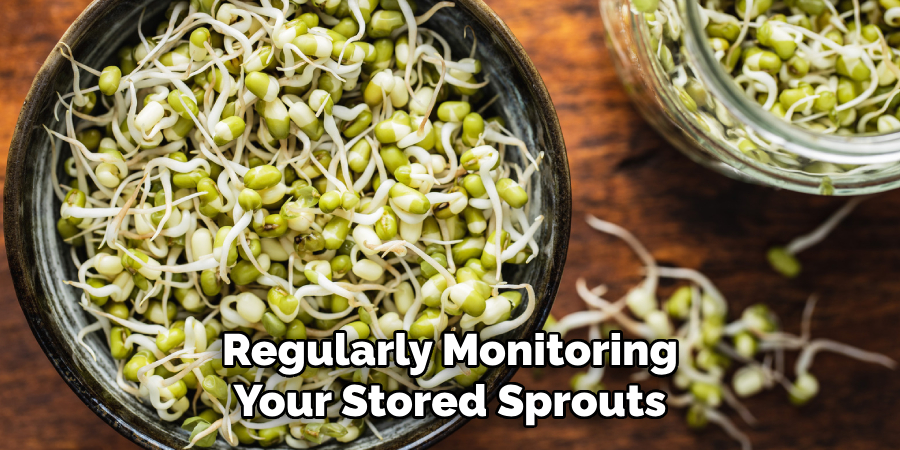
A: Signs of spoiled sprouts include a foul odor, slimy texture, or discoloration. If you notice any of these changes, discard the sprouts immediately as they may no longer be safe to consume. Regularly monitoring your stored sprouts can help prevent consuming spoiled sprouts.
Conclusion
Storing sprouts properly is essential to maximize their freshness and maintain food safety. By following these simple steps, you can extend the shelf life of your sprouts and ensure they are safe to eat.
Remember to rinse and refresh them every couple of days and consume them within 3-5 days for optimal freshness. With these tips on how to store sprouts, you can enjoy delicious and nutritious sprouts in your meals all week long!
Professional Focus
Angela Ervin, a former interior designer turned blogger, specializes in kitchen design and renovations. Through her website, she blends her passion for cooking with design expertise, sharing practical and creative ideas. Known for balancing functionality and beauty, Angela’s insightful content has made her a trusted voice in home design and lifestyle.
About the Author
Angela Ervin, an experienced interior designer and blogger, combines her passion for kitchen renovations with storytelling. Living in Petersburg with her family, she enjoys cooking and testing her projects firsthand. Known for her humor and relatable style, Angela shares creative, functional design insights through her content, making her a trusted voice in home design.
Education History
University: Virginia Commonwealth University
Degree: Bachelor of Fine Arts (BFA) in Interior Design
- Angela’s education at VCU focused on mastering core interior design principles, including spatial planning, color theory, materials selection, and sustainable design practices.
- She gained hands-on experience through studio projects and collaborative design exercises, which honed her ability to create functional and aesthetically pleasing environments.
- Her coursework also emphasized problem-solving and practical applications of design, preparing her for real-world projects like her self-directed kitchen renovations.
- The program’s strong foundation in both technical skills and creative expression shaped Angela’s ability to seamlessly integrate form and function in her work.


